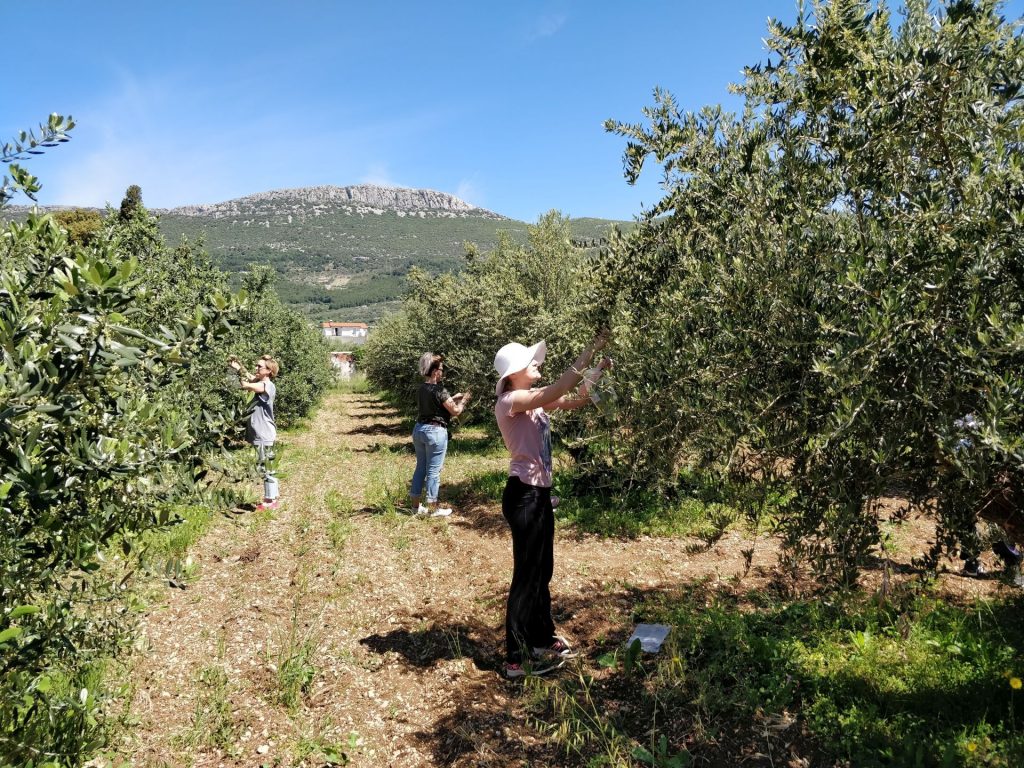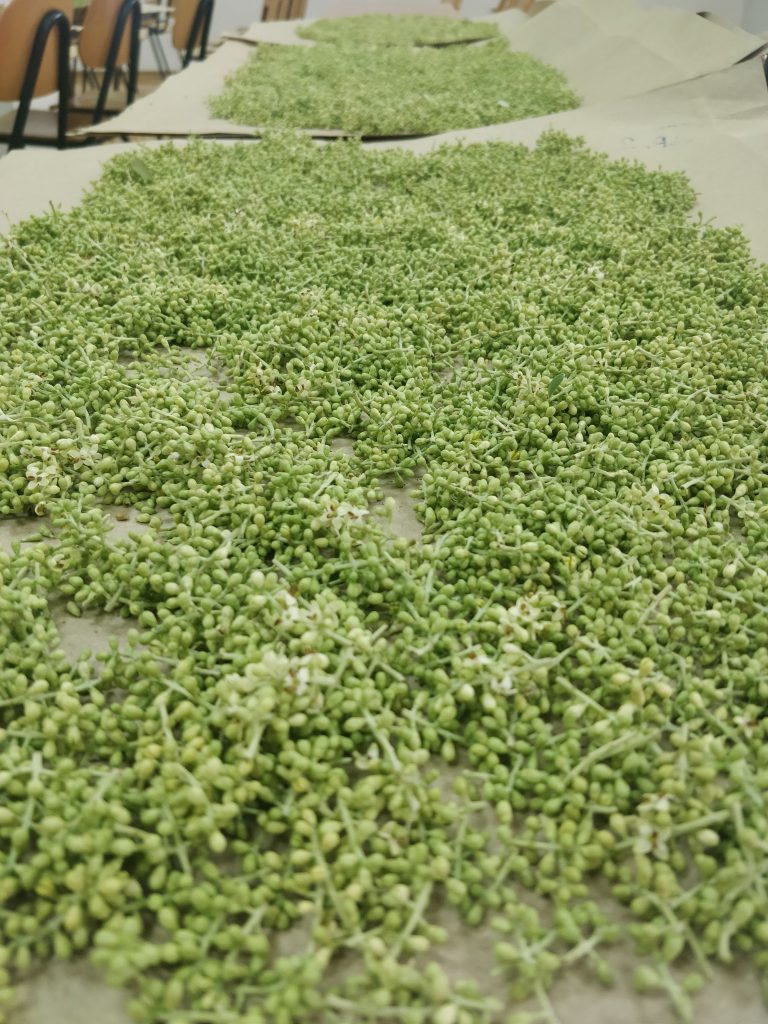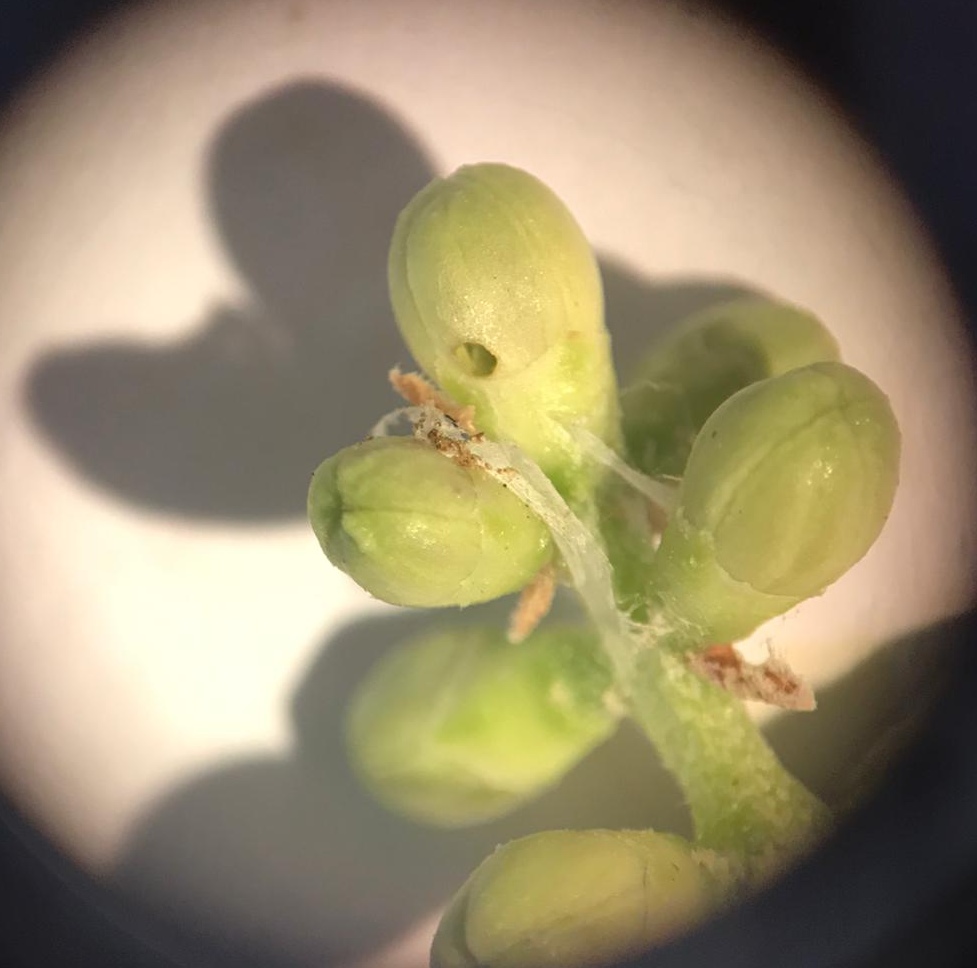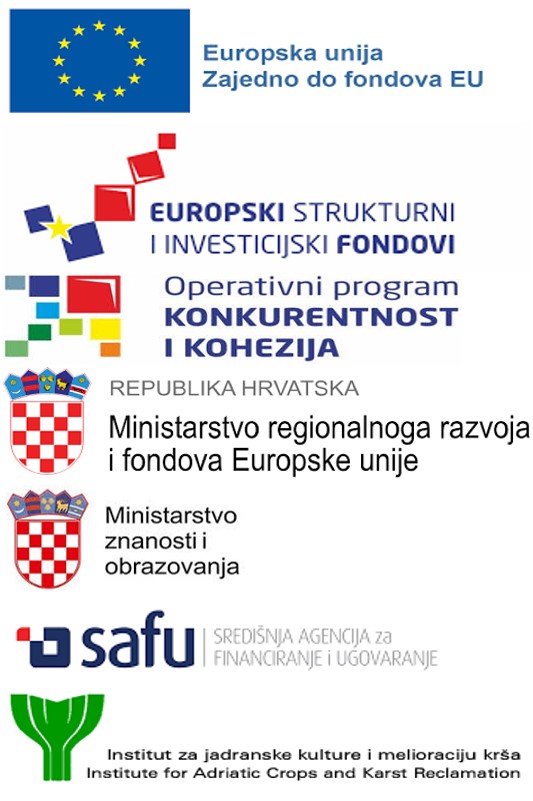
Flower samples of selected olive varieties were taken in the experimental olive orchard of the Institute for Adriatic Crops and Karst Reclamation for the purpose of further laboratory analyzes. Part of the flower samples was left to dry in order to carry out the extraction of essential oils from which volatile substances will be be isolated. The second part of the samples, as fresh material, was delivered to the laboratory for analysis of volatile substances from fresh flowers. The intensity of the attack of the antophagous generation of the olive moth (Prays oleae Bern.) was determined on the same olive varieties. The olive moth, along with the olive fly (Bactrocera oleae Rossi) is the most economically significant olive pest and causes damage almost every year. This pest has three generations per year, each of which takes place on different plant organs. The first generation is called antophagous or the generation of the olive flower and feeds on its inflorescences. Butterflies flies at the time of flower fringe, and are active at dusk and dawn. Females lay eggs on calyx of closed flowers. After 10 to 12 days, the caterpillars emerge from the eggs and burrow into the still unopened flowers and feed on its contents. When they finish eating the contents of the first flower, they burrow into the second flower. They repeat this action until they reach a size that makes it impossible for them to settle in the flower and therefore continue to eat the flowers from outside. Thus, the development of caterpillars of the first moth generation takes place on flower buds and olive blossoms and lasts 30 to 35 days. During this period, one caterpillar of an olive moth can eat up to 20 flowers.
The aim of these research activities and laboratory analyzes is to find volatile substances that could be responsible for attracting the olive moth.

Drying of olive inflorencenses

Damage of olive moth on olive inflorescesce
